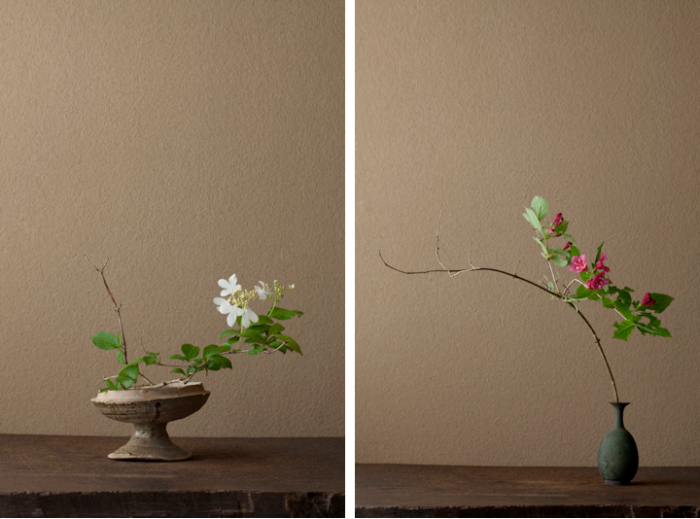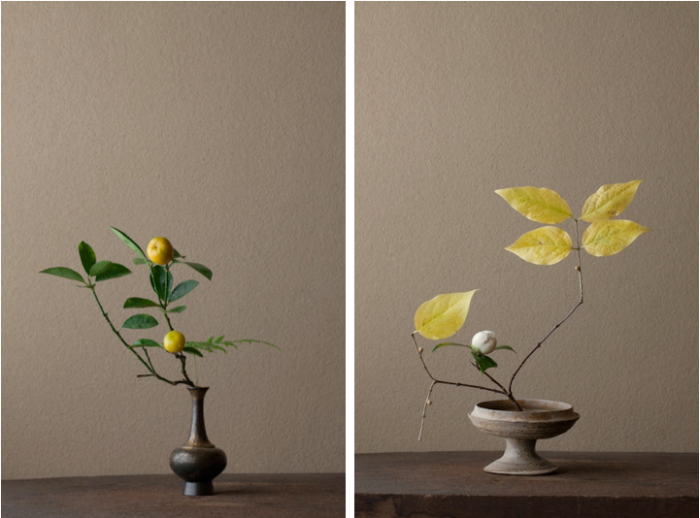Characterized by extreme discipline and minimalism, the Japanese art of ikebana requires intense study of a floral specimen, in order to reveal its essential form. It is a balanced, contemplative art. Go too far in stripping the details and the piece looses its vitality. Not far enough and the energy is obscured. To achieve such a delicate balance is the ultimate expression of humankind’s harmony with Nature, and the mark of a true master.
Toshiro Kawase is one such master. Born in Kyoto in 1948, Kawase earned a degree from Nihon University College of Art and went on to do graduate work in theater and film in Paris. Returning to Japan in 1974, he studied many forms of floral arranging, in order to hone his own poetic style. Allegorical, dynamic, and yet serene, Kawase’s compositions have been described as “portraits of Japan in flowers.”
Above: The following images, including the yellow specimens above, are all from Kawase’s latest book, available through the publisher in Japan. Copies of Kawase’s Inspired Floral Arrangements are available from $3.97 and up through Amazon.

Above: A delicate single bud in a vase.

Above: Earth, trees, and clouded sky: this single stem evokes the Japanese landscape.

Above: As important as the floral forms themselves, elemental vases are an essential part of Kawase’s compositions.

Above: Here Kawase plays with the vertical and horizontal elements to draw our eyes all around the composition.

Above: Kawase’s arrangements are often evocative of the seasons, such as this cascading maple and iris, which conjure the fresh spirit of spring.

Above: Yin and Yang: a whirlwind of fronds encircles deep inky berries.
N.B. Looking to try your hand at expressive flower arranging? Visit our tutorials on more extemporaneous bouquets.










Have a Question or Comment About This Post?
Join the conversation